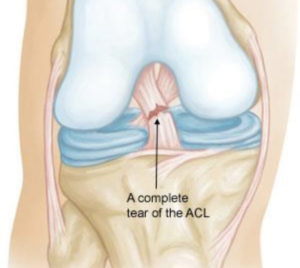
The Effect of Training Interventions on Change of Direction Biomechanics Associated with Increased Anterior Cruciate Ligament Loading: A Scoping Review
- PMID: 31493206
- PMCID: PMC6851221
- DOI: 10.1007/s40279-019-01171-0
Free PMC article
Abstract
Change of direction (COD) manoeuvres are associated with anterior cruciate ligament (ACL) injury risk due to the propensity to generate large multiplanar knee joint loads. Given the short- and long-term consequences of ACL injury, practitioners are interested in methods that reduce knee joint loads and subsequent ACL loading. An effective strategy to reduce ACL loading is modifying an athlete’s movement mechanics to reduce knee joint loading. The purpose of this scoping review was to critically appraise and comprehensively synthesise the existing literature related to the effects of training interventions on COD biomechanics associated with increased knee joint loads and subsequent ACL loading, and identify gaps and recommend areas for future research. A review of the literature was conducted using Medline and Sport DISCUS databases. Inclusion criteria consisted of pre-post analysis of a COD task, a minimum 4-week training intervention, and assessments of biomechanical characteristics associated with increased ACL loading. Of the 1,027 articles identified, 22 were included in the scoping review. Based on current literature, balance training and COD technique modification are the most effective training modalities for reducing knee joint loading (small to moderate effect sizes). One study reported dynamic core stability training was effective in reducing knee joint loads, but further research is needed to definitively confirm the efficacy of this method. Perturbation-enhanced plyometric training, the F-MARC 11 + soccer specific warm-up, Oslo Neuromuscular warm-up, and resistance training are ineffective training modalities to reduce COD knee joint loads. Conflicting findings have been observed for the Core-Pac and mixed training programme. Consequently, practitioners should consider incorporating balance and COD technique modification drills into their athletes’ training programmes to reduce potentially hazardous knee joint loads when changing direction. However, training intervention studies can be improved by investigating larger sample sizes (> 20), including a control group, acknowledging measurement error when interpreting their findings, and considering performance implications, to confirm the effectiveness of training interventions and improve adherence.
